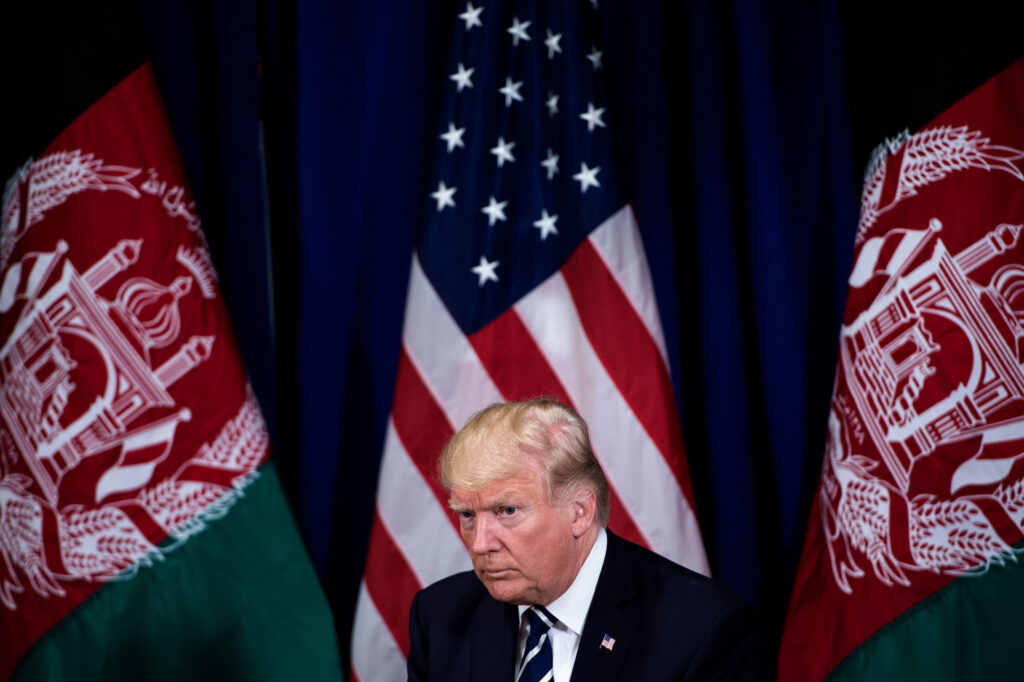In early September, the Taliban and the Islamic Republic of Afghanistan began historic peace talks in Doha, Qatar aimed at actualizing a power-sharing government after nearly two decades of war. Following repeated delays and arduous negotiations, delegations from the two sides finally came together to reach a political settlement for lasting peace.
The Trump administration initiated intra-Afghan negotiations after signing an agreement with the Taliban in February. Peace talks offer the country a rare opportunity to build a framework for lasting coexistence after nineteen years of bloodshed. Afghans are in dire need of a permanent ceasefire, especially now that the coronavirus is pushing millions into poverty and devastating the economy, with 90% of the population living below the poverty line of $2 a day.
While getting the Taliban and Afghan government to the table is an accomplishment in and of itself, negotiations will be long and difficult, and both parties will need to reconcile fundamental differences over the country’s system of government to reach a successful deal. This article outlines the developments that have led to peace talks, challenges facing intra-Afghan negotiations, and future policy considerations.
Intra-Afghan Peace Talks
After more than eighteen months of negotiations, the United States reached an agreement with the Taliban in February, signaling the possibility of ending the U.S.’ nearly two-decade-long involvement in the war. The agreement commits the United States to a gradual withdrawal of military forces in exchange for the Taliban’s commitment to preventing Afghan soil from being used as a safe harbor for terrorists ever again. The agreement also obligates the Taliban to commence peace negotiations with the Afghan government and was preceded by a ‘Reduction in Violence’ deal to test the Taliban’s commitment to achieving peace and controlling its forces.
On the same day the U.S.-Taliban agreement was finalized in Doha, the United States signed an agreement with the Afghan government in Kabul. A joint declaration between the U.S. and Afghan government outlined goals for achieving peace and regional stability in Afghanistan, including a permanent ceasefire, withdrawal of U.S. troops, and counterrorism operations.
Talks between the Afghan government and the Taliban were supposed to begin on March 10, 2020, as per the U.S.-Taliban agreement, following an initial prison exchange of Taliban prisoners and Afghan security forces prisoners. However, the Afghan government had not been consulted on the exchange, resulting in contention and a delay of peace talks. After more negotiating, the Afghan government eventually agreed to release 1,500 prisoners and created a negotiation team for the talks composed of “politicians, former officials, and representatives of civil society,” five of whom were women.
In June, the Taliban and Afghan government agreed to open intra-Afghan peace talks in Qatar to negotiate a ceasefire and long-awaited political settlement to nineteen years of conflict. However, tensions increased when the Taliban rejected said ceasefire, which the government called for during the holy month of Ramadan so authorities could focus on curbing the spread of coronavirus. The Afghan National Security Council reported that attacks by the Taliban over the previous three months rose by nearly 40 percent compared to the same time last year. The Taliban promised not to target American bases, but refused a ceasefire with Afghan forces, leaving that to direct negotiations between both sides. In response, Afghan President Ashraf Ghani warned that Taliban-sponsored violence could pose a serious threat to negotiations during the peace process in September.
Key Challenges
Intra-Afghan talks are a historic chance for peace but there is still a long road ahead, with many challenges threatening the viability of a sustainable peace agreement. First, the Taliban and Afghan government will have to reconcile fundamental differences in ideology and governance systems. The majority of citizens support the current “Islamic Republic” which follows a democratic constitution, separation of powers, and equal rights for men and women to participate in politics. The Taliban, however, seek to establish an “Islamic system” which has yet to be defined, but would likely be similar to the restrictive regime established in the late 1990s which included: banning entertainment, forcing men to grow beards, and shutting down girls’ schools. The Taliban have been steadfast in their opposition to democratic elections and the country’s constitution. For an agreement to be successful, the Taliban must be flexible and willing to make concessions with regard to issues such as the role of Islam and women’s rights in the legal system.
The second challenge facing intra-Afghan talks is internal division on both sides. After the disputed and controversial outcome of the September 2019 presidential election — which resulted in Ghani’s presidency by a razor-thin majority of 50.64 percent of votes — the Afghan government is extremely fragile. While a power-sharing agreement was reached by Ghani and Abdullah Abdullah, Chief Executive Officer of Afghanistan, tensions between the two politicians remain high, and the Afghan government is plagued with other forms of high-level corruption that threaten its cohesion and credibility. Internal divisions within the Taliban will also make negotiating difficult, as factions hold different stances on the peace agreement. Some Taliban members refuse to acknowledge the agreement, while others are working to strengthen ties with the Haqqani Network and the Islamic State in Khorasan.
Finally, it is unclear whether the Taliban are truly acting in good faith. The group has already objected to numerous compromises such as prisoner exchanges and a temporary ceasefire, making Afghan and U.S. officials cast doubts on whether they are serious about reaching a peace deal. The Taliban’s increased attacks on Afghan forces following the February agreement also raise concerns about the viability of a long-lasting ceasefire. Skeptics argue that the fundamentalist group is only negotiating to drive U.S. troops out of the region so Taliban forces can overthrow the Afghan government and establish an interim one.
Future Policy Considerations
The stakes in Afghanistan are as high as ever and the United States should view intra-Afghan peace negotiations a foreign policy priority. After nineteen years of involvement in the conflict, a final peace agreement would allow the United States to withdraw forces and reduce its security and development commitments, focusing instead on recovering from the pandemic and addressing tensions with China and Iran.
Despite bipartisan support for a complete withdrawal of U.S. troops, abandoning Afghanistan before a peace agreement is settled would be a foreign policy disaster. Not only is Afghanistan on the brink of a humanitarian crisis, but the country is also still at risk of becoming a hub for terrorist organizations such as the Islamic State of Iraq and the Levant (ISIL), especially if the Taliban were to overthrow the Afghan government. A withdrawal of troops would also send a bad signal to allies about U.S. credibility in the region. Thus, the United States should continue providing economic, military, and humanitarian assistance to the Afghan government and remain heavily involved in the peace process to prevent stalled negotiations and ensure a peace settlement is reached.
The harsh reality is that one or both sides may refuse to proceed with negotiations, resulting in a stalemate. Given the Taliban’s lack of commitment to democracy, it is extremely likely that the group will refuse to make concessions on civil liberties, the role of Islam in governance, or political power-sharing. The U.S. must be prepared to maintain the presence of U.S. forces in Afghanistan if the Taliban chooses to renege on its commitment and develop credible threats to ensure that recent progress is not reversed.
While reaching a political settlement should remain a U.S. priority, it must be done without sacrificing the societal gains that have been achieved in the past two decades. The Afghan government should not make concessions on civil liberties, women’s rights, and democratic principles of governance when negotiating with the Taliban. Afghan women’s hard-won rights cannot be sacrificed for political gain. Instead, leaders should continue to involve Afghan women in the negotiation process to ensure their voices are heard and promoted in the formation of a peace agreement.







